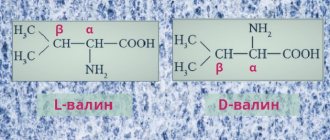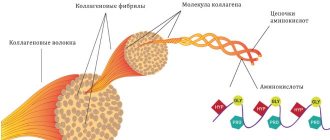Trans fats are by-products that are formed during hydrogenation during the production of lard.
When fat in a liquid filling consistency reacts with hydrogen, not all fat molecules come into contact with it.
Such molecules become dangerous compounds because they have a modified structure.
These molecules cannot combine with hydrogen atoms, but they do not prevent one of their parts from turning in the opposite direction. This is how trans isomers are formed, which have a similar composition to fat, but their structure is completely different and is harmful to human life.
Many call them transgenic fats, but this name does not correspond to the truth, because this process is not associated with a change in the genome, it is only a reaction of modification of the molecule.
Where are trans fats found?
These are isomers of trans products of polyunsaturated fatty acids, which are formed in normal molecules found in vegetable oils.
Hydrogenated fat is found in small quantities in natural vegetable oils, as well as in bacteria that inhabit the stomach of ruminants, so trans fats are found in small quantities in milk and, accordingly, in cow butter, containing from 2.0% to 8.0% hydrogenated oils .
And hydrogenated oil, which was obtained industrially, contains tan fats from 67.0% to 70.0%.
It is also necessary to note the fact that trans fats, which have a natural basis, and trans fats, which have an artificial way of obtaining this product, contain completely different structures, and, accordingly, different properties of their influence on the human body.
Hydrogenated oil
Dairy and meat products
The trans fats they contain are called natural. They are somewhat different from artificial ones in terms of chemistry and have not been studied for health risks.
However, scientific evidence suggests that they provide about 20% of the trans fats in people's diets, compared to industrially produced foods and oils, which account for about 80%.
According to official WHO data, milk and meat can contain up to 6% trans fats (3 times the safe threshold).
According to the already mentioned study (Journal of the American Dietetic Association, 2006), milk and meat can contain up to 5 g of trans fats per 100 g of product. In butter (natural!) - up to 7 g. But in skim milk there will be almost none.
But all these figures cannot be applied to sausages. Their shelf life is much longer than that of meat - this is also achieved with harmful industrial additives.
Let's talk separately about milk formulas for newborns. This is the only dairy product in which, by law, trans fatty acids cannot exceed the established norm (SanPiN 2.3.2.1078-01). This is 3% of the total fat mass.
Conclusion: if animal trans fats harm the body, then their consumption may well lead to all the diseases that scientists talk about.
Where did trans fats come from?
One of the components of a person’s diet every day should be proteins with carbohydrates and fats. These substances in various quantities that are necessary for a person must enter his body. This is a person’s energy charge for every day.
At the end of the last century, the American company Procter & Gamble began producing hydrogenated fats called margarine. Margarine became a fairly popular product that was affordable for all segments of the population.
Margarine is also convenient for preparing various dishes and baking. Dishes made from margarine did not lose their freshness for a long time, and baked goods did not become stale.
It was with the use of margarine in food that the production of fast food began. Trans fats are also found in mayonnaise and industrial sauces.
Only in the late 90s of the 20th century, doctors and scientists paid attention to the structure of trans fats from which margarine is extracted.
It turned out that transgenic fatty acids are harmful because when they enter the body with food, they disrupt metabolic processes and lead to the development of serious pathologies.
Trans fats are not a building material for cell membranes, and also do not provide energy potential for the body. Transgenic fats can settle on organ cells and in the bloodstream, causing a number of serious diseases.
Trans fats are not a building material for cell membranes
The harm of trans fats
Natural fats in our body provide protection to the cell and its exchange with other cells of oxygen and nutrition.
But trans fats do not participate in these processes. Plus, they also prevent real fats from doing their job.
And the result of this is a number of diseases:
- ischemic disease - the cause is poor supply of oxygen and nutrition to the heart;
- stroke – damage to blood vessels supplying various parts of the brain;
- dry gangrene - blackening of the limbs due to blockage of small capillaries through which blood flows to the arms and legs;
- angina pectoris – when, as a result of long-term ischemic disease, a person cannot tolerate even minor physical activity.
The highest mortality rate in the world is caused by these diseases. And their main reason is the consumption of trans fats.
Due to the fact that the body has problems with fat metabolism, hormonal infertility occurs. Lack of cholesterol, from which sexual hormones are formed, leads to disruption of their structure.
Fats help remove toxins from the body. But trans fat is not involved in this. The result is an increase in cancer and poisoning of the body.
Industrial process for hydrogenation of trans fats
To obtain a cheaper product for use in cooking, an innovative technology for hydrogenating vegetable fats to produce trans fat was developed.
Vegetable oils were used for this technology:
- Refined sunflower oil;
- Palm oil;
- Coconut oil;
- Cotton oil;
- Soybean oil.
Hydrogenation of vegetable oils made it possible to transform their consistency from a liquid state into a fairly solid product.
This process is divided into several stages:
- Purification (refining) of vegetable oil from all kinds of impurities in it;
- Due to copper and nickel salts, fats are saturated with hydrogen atoms;
- After combining fatty acids with hydrogen atoms, the vegetable oil molecules harden and transgenic fat is obtained;
- There is also a dehydrogenation technique, when the process of detaching hydrogen atoms from fatty acid molecules occurs and a transition from the solid structure of trans fat to the liquid structure of oil occurs.
At the everyday level, a person does not need to know the process of producing trans fats, but every person who cares about their health and the health of their family should study the labels on them when purchasing products.
Over the past few decades, global consumer protection policies have required all food manufacturers to indicate on their food labels the presence of saturated fats and hydrogenated fats, which are hazardous to the human body.
European and American manufacturers strictly adhere to these rules, but manufacturers in Russia and countries from the post-Soviet space are not always conscientious in complying with all the requirements and laws of their state and the international community.
Hydrogenation of vegetable oils made it possible to transform their consistency from a liquid state into a fairly solid product
Why were fat substitutes invented?
Trans fats appeared in the post-war years against the backdrop of mass hunger and technological progress. Manufacturers immediately appreciated the benefits of the new food product. But the human body still does not know how to remove them and how to get rid of the damage caused by them.
Scientists were prompted to invent trans fat by three factors:
- Vegetable oils are healthier than “harmful” animal fats. The latter contain “bad” cholesterol, which causes obesity and heart disease.
- Unsaturated vegetable fats contain a number of essential acids - Omega-3 and Omega-6, which is why the oils are in demand among buyers.
- Natural vegetable oil has a short shelf life of 2–4 months. And to preserve the taste of the oil, store the food product in a dark room at a temperature of 20°C.
The pickiness of vegetable fats did not benefit producers. The price of the product rose, and competitiveness fell. Then scientists created an “improved” cheap analogue, not picky – trans fat. The new product can be stored at room temperature.
- We recommend reading about the role of fats in the human body
Trans fats are obtained by hydrogenation - passing hydrogen through heated vegetable oil and cooling. As a result, although the product originated from liquid vegetable oil, their structure is solid.
How dangerous are foods with trans fats for the body?
Modern equipment and the use of biochemical analysis have made it possible to thoroughly study the structure of artificial trans fats. It has been revealed that products containing more than 4.0% trans fats have a negative effect on the body of any person.
Transgenic fatty compounds disrupt metabolism, and a malfunction occurs in the carbohydrate and lipid processes, which leads to the development of such pathologies:
- The formation of atherosclerotic plaques on the inner sides of the membranes of blood vessels, which provokes complex pathologies such as systemic atherosclerosis and thrombosis;
- Arterial hypertension with a very high blood pressure index;
- Heart diseases, which manifest themselves in tachycardia, arrhythmia, angina pectoris and myocardial infarction, which quite often ends in death;
- The blood becomes very viscous, which can also lead to cardiac arrest;
- Diabetes mellitus type 1 and 2;
- Impaired microcirculation in the brain, which can cause a stroke;
- Joint pathologies - osteoarthritis of the deforming type, osteochondrosis;
- Obesity of liver cells and disruption of their functioning, which provokes cirrhosis and hepatitis;
- Overweight and obesity pathology;
- Oncological neoplasms on internal organs, especially on the organs of the digestive system;
- Disturbances in the functioning of the human nervous system;
- The risk of breast cancer in women and prostate cancer in men increases.
European manufacturers were among the first to reduce the content of trans fats in food products, and since 2003, no more than 2.0% of artificial transgenic fat is allowed in European products.
Overweight and obesity pathology
Harm of transgenic fats for the body of children
The harmful effects of trans fat on the growing body of children are tens of times stronger than for adults.
To build cell membranes, the child takes fat from food, so low-quality transgenic fats contribute to the construction of defective cell membranes, which negatively affects the child’s health.
Foods containing large amounts of hydrogenated fat quickly satisfy hunger, but are good for the child’s health:
- There is a disruption in the functioning of the immune system, and children are susceptible to invasion of the body by infectious and viral agents. A child who often eats fast foods also often gets colds;
- There is an inhibition in the child’s development, both intellectual and physical;
- Shortness of breath and pathologies of the respiratory system appear at an early age;
- The pathology of liver cell hepatitis develops;
- The quality of vision decreases, and the child begins to study worse as a result;
- There is a decrease in attentiveness and concentration;
- In boys at puberty, the production of the sex hormone testosterone decreases;
- Apple-shaped obesity occurs in children. In girls of puberty, the synthesis of female hormones decreases and they are replaced by male ones, while in boys the opposite happens, when male hormones are replaced by female ones, causing fat to be deposited on the chest, waist and buttocks. This threatens a failure in reproductive function, which can lead to infertility in the future;
- Children begin to develop arterial hypertension from an early age;
- The development of heart pathologies occurs from excessive consumption of fast foods;
- The child's intelligence decreases;
- There is a decrease in memory and it is quite difficult for children to remember educational material, which leads to a decrease in school performance;
- The risk of developing depression in children and especially adolescents increases;
- The functionality of the nervous system is disrupted and the child becomes nervous and capricious.
It is very difficult for children to give up fast food and cakes, so the task of parents is to create a balanced menu of dishes that the child eats.
Food should not only be healthy and tasty, but it is also important for children that the dish is presented beautifully, and they will work up an appetite.
Parents should also constantly explain which foods are classified as trans fats and ensure that children do not buy these foods to eat outside the home.
It is very difficult for children to give up fast foods and cakes.
Why are trans fats harmful?
This is what modern science knows: What Are Trans Fats, and Are They Bad for You? about the negative effects of trans fats.
Increases “bad” cholesterol levels
This is the first global flaw discovered by scientists. Today it is already reliably known Trans fat is double trouble for your heart health: consumption of trans fats increases the amount of “bad” cholesterol - LDL (low-density lipoprotein). LDL accumulates on the walls of blood vessels and narrows them - this is how cholesterol plaques form.
At the same time, the amount of high-density lipoprotein - “good” cholesterol, which reduces the risk of plaque formation, on the contrary, decreases.
Increase the risk of heart attacks and strokes
This is a consequence of the point about cholesterol. Plaques on the walls of blood vessels impair blood circulation. In addition, they can break off and enter a vital organ, blocking blood flow there.
If this happens in the heart muscle, a myocardial infarction (heart attack) is likely. If we are talking about the brain, a stroke may occur. All of these are extremely dangerous conditions that can lead to death.
Likely to increase the risk of developing diabetes
The relationship between trans fat consumption and the risk of diabetes is not yet entirely clear. Thus, in the study Diet, lifestyle, and the risk of type 2 diabetes mellitus in women, which covered over 80 thousand women, it was found that those who consumed more fat developed diabetes 40% more often. But other scientists failed to find a clear relationship.
Experiments on animals gave more clear results. For example, it has been found that a diet rich in trans fats reduces in rats Dietary trans‑fatty acids alter adipocyte plasma membrane fatty acid composition and insulin sensitivity in rats and monkeys Trans fat diet induces abdominal obesity and changes in insulin sensitivity in monkeys sensitivity to insulin, and this is the first step towards developing diabetes.
Lead to the development of inflammatory processes
Chronic inflammation is associated with an increased risk of developing many diseases: the already mentioned cardiovascular and diabetes, arthritis, metabolic syndrome and even oncology.
At the same time, a number of studies Consumption of trans fatty acids is related to plasma biomarkers of inflammation and endothelial dysfunction, Dietary intake of trans fatty acids and systemic inflammation in women have established: there is an unambiguous connection between the consumption of trans fats and an increase in the number of inflammatory markers in the blood.
Possibly capable of causing cancer
It is possible that trans fats also increase the risk of developing certain types of cancer - in particular, breast cancer Comparison of the 1997 and 2003 American Diabetes Association classification of impaired fasting glucose: impact on prevalence of impaired fasting glucose, coronary heart disease risk factors, and coronary heart disease in a community-based medical practice. However, there is still insufficient data to support this hypothesis.
Use in production
If hydrogenated oil is so dangerous to the human body, it should simply be banned from use in food production, but it is still used in the manufacture of many foods and dishes.
There are many reasons for using trans fat in cooking:
- Trans fats are good preservatives, so using them in food products extends their shelf life;
- Cheaper products due to the low cost of trans fat;
- Trans fats can be used more than once, for example, for deep-frying foods.
How to avoid eating foods with trans fats?
In order to avoid consuming hydrogenated oil, which is quite dangerous for the body, especially for the body of growing children, it is necessary to completely eliminate foods with trans fats from the diet.
This is quite easy to do:
- Do not buy margarine, which contains the highest amount of transgenic fat. It is necessary to use cow's butter, which has a natural base, which also contains trans fats, but of natural origin and not dangerous to the human body;
- Find yourself from visiting fast food cafes, where all products contain hydrogenated oils in large quantities;
- Do not use semi-finished industrial products in cooking, as well as crab sticks and processed cheese;
- Do not buy cheese products and spreads;
- Beware of inexpensive desserts - cakes, cookies and gingerbreads, pastries and rolls. It is necessary to carefully study the label. You should also know that products without the maximum content of trans fats will not be cheap;
- Do not use industrially produced sauces - mayonnaise and ketchup. It’s better to eat homemade sour cream, or make mayonnaise at home with eggs and olive oil; you can also make high-quality and tasty ketchup based on natural tomato juice at home;
- You should not buy refined vegetable oils; it is better to buy regular sunflower oil at the market from the villagers;
- Prepare dishes using the method of stewing, boiling, or baking, because any vegetable oil, when heated, fills food with harmful carcinogens.
When purchasing food products, you must remember that the shorter the product’s shelf life, the lower the percentage of transgenic fats it contains.
Do not buy margarine, which contains the highest amount of transgenic fat
What foods contain trans fats?
To protect yourself and family members from consuming transgenic oils, you need to know which food products contain the most of them.
List of products containing trans fats:
- Salted cracker cookies;
- Potato chips;
- Quick breakfasts and protein bars;
- Semi-finished popcorn that you can cook yourself in the microwave;
- Frozen semi-finished products - pancakes, dumplings, pizza, waffles;
- Deep fried potatoes;
- Products containing margarine;
- Cakes and pastries;
- Industrial baked goods;
- Coconut and palm oil;
- In fatty pork, as well as in fatty lamb meat;
- In Apple pie order;
- In dairy products with high fat content.
Chocolate contains trans fats
Table of trans fat content in food
| name of food product | the amount of trans fat in it, the unit of measurement is grams |
| pie fried with chicken (1 pc.) | 8 |
| 2 pieces of biscuit | 8 |
| portion of deep fried potatoes | 8 |
| nacho cheese (1 serving) | 5 |
| hard margarine (1 tablespoon) | 5 |
| Oreo cookies (6 pieces) | 4 |
| waffles (1 piece) | 4 |
| popcorn (1 small portion) | 3.5 |
| apple pie (1 slice) | 3 |
Due to the fact that trans fats are not natural, but artificial fat, it is very difficult for the human body to process it and transgenic fats do more harm to the human body than saturated fat of animal origin.
How to remove trans fats from the body?
To remove trans fats from the body, you must adhere to the following rules and use only natural products in your diet:
- It is necessary to introduce vegetable oils into the diet, which replace trans fats and benefit the body with the help of polyunsaturated fatty acids in their composition. It is necessary to use the following types of oil for food: olive, pine nut and almond oil, corn and sesame oil, flaxseed and peanut oil;
- It is necessary to consume freshly squeezed vegetable and fruit juices more often - juice of carrots and beets, celery, cabbage, tomatoes, apples and pears, and cucumber and watermelon juice are also very useful;
- Drink 2 cups of green or herbal tea daily, as well as a decoction of rose hips;
- Do not use the frying pan for cooking, especially for children;
- Introduce into your diet foods high in ascorbic acid, vitamin E and minerals - calcium and potassium.
What it is?
Trans fats are a subtype of saturated fats. These are fatty acids with a modified formula. Trans fat occurs in healthy unsaturated fats during industrial heat treatment. Fat molecules are overly saturated with hydrogen and can remain solid at room temperatures. For example, liquid oil becomes solid fat.
Small amounts of trans fat (5-9%) can be found naturally in meat and milk. Increased levels of the element are found in food that has been processed under high temperatures: fast food, semi-finished products.
It is important to know that during processing and hydrogenation (the addition of hydrogen molecules to unsaturated fat molecules) a catalyst is used that contains nickel. The latter is considered a toxic element!
Heat treatment also produces trans isomers (fatty acids in trans fats) and other components that can be harmful to the human body. I will talk about this in more detail below.











